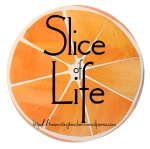This summer, I've joined #cyberPD, an online study group, with a wonderful community of educators! We are reading and discussing DIY Literacy Teaching Tools for Differentiation, Rigor, and Independence by Kate Roberts and Maggie Beattie Roberts. A big thank you goes out to Michelle Nero (@litlearningzone), Laura Komos (@LauraKomos), and Cathy Mere (@cathymere) for organizing this group. Information about this #cyberPD group can be found here.
Chapter 3: Helping Students Recall Teaching
Tools can help students recall teaching:
| ||
p. 39-44 CHARTS
|
p. 45-46 BOOKMARKS
|
p. 46-49 DEMONSTRATION NOTEBOOKS
|
* Love the explicit conversations you have with students about WHY we are using the tool. For example, " I care that you try out some of the things I teach you, not just because I have spent time on my lesson, but because I really believe that if you do this work you will love reading even more than you do now."
* "Reader Chills" refer to that feeling you get when you have had a huge, awesome thought about a book
* Repertoire chart is like a "greatest hits" (strategies that are most helpful)
|
* something students make themselves
* bookmarks are personalized lists of things that will help students remember past teaching
* students will need to keep the bookmarks next to them during lessons and practice
* bookmarks can be a support for students who need a more personalized list {than charts}
* can stay by their side as long as they need the support
|
* helps students see which skills in a unit are most essential
* "Keep it simple. Get it right." p. 46
* can make it in front of the kids (more powerful)
* can support students who need an additional round of seeing HOW a lesson or strategy works before it becomes their own
* p. 48 gives an explicit example for teachers as to how the demo notebook lesson may look within a small group of students
|
Synthesizing Ch. 3:
1.) Looking at student work (independent work). I love this reminder to always have the work front and center and not what we "think" we see/hear.
2.) In addition, this chapter reminds us about the importance of scaffolding. The ultimate goal is to remove the tools and lead students to independence. We have to take note of:
-timing
-behavioral cues
-rigor
3.) Don't fall into the trap of, "But I already taught you that!" Lehman and Cruz remind us, if we had really taught it, then the kids would be able to do it." Really students are telling us that they aren't there yet. They are communicating to us that work still needs to be done with that skill.
Chapter 4: Motivating Students to Work Hard
RIGOR: Love the conversation the authors had with us on this on the top of page 54!!!!!
Two forms of rigor:
(1) the task - We can make the task more rigorous by elevating the text complexity, raising the standards, or increased the volume of writing).
and (2) the behavior - description of the behavior rather than task. It is the persistence and dedication of the students working towards the task. When we focus on the work and effort that students put into tackling a task we create opportunities to really see what's difficult for the kids.
"Becoming is better than being." ~Carol Dweck p. 54
"Rigor without relevance is simply hard." ~ Kylene Beers p.55
It is all about the learning climate.
- intrinsic motivation [David Pink]
- we have to admit that much of our teaching still leans on TELLING students what to do rather than fostering the idea that they can succeed on THEIR OWN.
Tools can motivate students to work hard:
| |||
p. 56-60 MICRO- PROGRESSIONS
|
p.62-64 DEMONSTRATION NOTEBOOKS
|
p. 64-65 CHARTS
|
P 66-67 BOOKMARKS
|
- helps students see HOW to work harder
- gives a vision
- being explicit by saying, "...you might not know what it looks like to work really, really, hard on your nonfiction pieces of writing."
- each column represents a different level of work
- get students involved in process by having them take our their own notebooks and pens
- p57 shows the MP being made with the class
- Teacher's role as the coach to "get into a game of higher-level work"
|
- perfect tool to use when students need some assistance in learning the actual steps and strategies to work even harder
-helps students see the “before” and “after” which can be motivating
-create rigor by introducing students to the concrete steps, ways, or examples to begin challenging work.
|
-once students have an awareness of rigorous work, charts are powerful reminders
-nudge readers to use the chart to help them achieve their highest level of work
-helps students “see the way”
|
- empowers students with their own individual plan for how to work rigorously
-”Anytime we are working hard on ____, you can take our your bookmark to help you.”
|
Synthesizing Ch. 4:
1.) Create opportunities to celebrate and talk to each other.
"I used to...but now I...."
2.) Listen to student conversations to determine the area students are working less rigorously.
3.) Students who have used their tools successfully will be able to point to areas of growth.
4.) Do a "far observation" [Allington] of your students and note their behaviors (ex- hunched over work, looking around for resources, pausing, talking to partners, etc.)
ULTIMATELY, students have to know...
1. what it means to work harder
2. what it looks like to work harder
3. how to reach a higher level of performance
We can take the mystery out.







